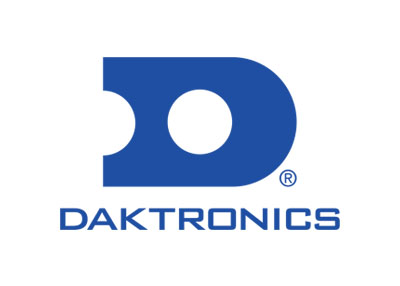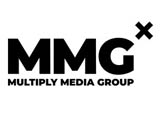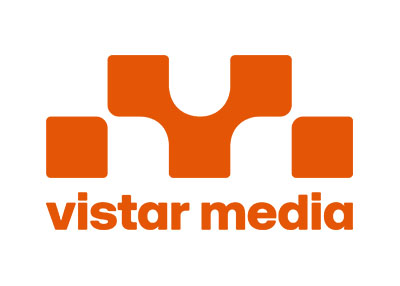
Part one – Thursday 5th June
Ladies and gentlemen we have come to the end of the official part of the program of the first day.
We were welcomed by the City councilor of cultural affairs of the city of Vienna, who has expressed the commitment to outdoor advertising as part of the cultural life of a city.
I believe that this commitment is of special significance, especially if we take the international developments of the last years into account. I only mention Sao Paolo as an example, a metropolis, in which outdoor advertising had been banned completely due to unregulated growth. Only after the implementation of a new concept which was developed in cooperation with the city council was outdoor advertising possible again in Sao Paolo.
Jean-Francois Decaux showed us a fantastic overview in which direction OOH Advertising will go. He showed us that our medium is moving in 3 growing fields. urbanisation – 70% of the world population lives in cities – mobility – we all stay longer and more often in the public space – and digital. Fantastic examples digital Chicago, digital Tesco or LA airport with the integration of content into digital OOH landscape, it shows us where the journey will go.
Geoffrey Hantson showed great examples of creativity. It was amazing to see how fast communication goes from storytelling of one way communication into the uncontrollable area of virtual community. The new way is: ‘give people’ a story to tell’ and Geoffrey said, “Out of Home is not our monopole”, also mobile marketing is Out of Home and he advised us to use mobile marketing as part of the OOH world more strongly.
Pippa Goodman of Future Foundation presented a study, which was initiated by FEPE, about the effect of OOH advertising.
With fantastic results – for example that OOH advertising is right behind TV ads as the most memorable advertising with a big gap to other media. Or which enforcing impact OOH makes in combination with TV or print.
Results that we repeatedly have to present, just like the amazing video Outdoor to the power of 5 by David McEvoy. He defined our target group young, urban, mobile and connected. And that OOH advertising has left the path of visual pollution and is creating new urban landscapes.
Thank you Daniel Cuende for the perspective on the possibilities the use of Big Data is offering. And Bob Wootton for the interesting interview with Sarah Mansfield of Unilever that clearly showed us what the consumer industry is expecting of us: digital, flexibility, cooperation with mobile devices. With one word: helping - to connect the consumer with the brand.
Our friend Jeremy Male gave us a fantastic overview about the American OOH market and showed the differences to the European market. And thanks for the good news that one of the most dynamic companies of the world, Apple, spends more than 11% of its communication budget on OOH.
Thanks also for the interesting presentation about the Indian market. A market with fantastic growth opportunities.
And also thank you for the brilliant presentation from Shaun Gregory. What fantastic chances to grow.
From 7 to 10 was the theme of Jean Francois Decaux’s talk. To ten percent media market share! And he explained that he will only speak at FEPE again, if our industry has reached the 10% mark at an international level.
So ladies and gentlemen, there is a big task ahead of us. But with the deployment of the new technology this goal can be reached. it will be a long journey and it is important to take the path that leads us to growth. And I am sure, that the last word has not been spoken by Jean Francois Decaux yet and that he will be happy to come back, when we are half way at 8.5% market share.
.jpg) Part two – Friday 6th June
Part two – Friday 6th June
Ladies and gentlemen, we are coming to an end of the yearly congress of FEPE 2014 in Vienna. This congress takes place at a time in which we still feel the aftermath of the financial and economic crises of 2008. The time of big economic growth, which industrial nations have experienced in different waves since World War II, is ebbing away. Therefore we have to adopt ourselves to smaller growth, if even any growth, meaning that the fight for resources and in our case those are media budgets, will become harder. Regional growth takes place far away from us in the Asian, pacific and African region.
Growth also occurs through technological developments that take our industry onto new levels with the digitalization of our advertising spaces as well as the combination of new digital possibilities with the mobile internet. Furthermore through the combination of our media with new technologies be it QR Codes, Bluetooth, WLAN or near field communication. All this creates fantastic possibilities which are still ahead of us and which can lead the oldest mass media that was born with guide signs in Egypt 3000 years ago, to a new renaissance. The chances are there and much of those have been pointed out within the framework of this conference. As always, whenever technological change occurs, it can only happen in fragments, rudimentary and exemplary.
Therefore this conference was not about presenting readymade solutions, but to show chances and opportunities. And if inspiration arises from this conference, then it was successful. Of course we have to take for granted that there is competition within our medium on a national as well as on an international level. Nevertheless, or rather, even more important so is the existence of a platform essential that articulates and puts forward joint interest. Fact is that our medium still represents a small portion of the international media markets. However, a lot of what has been presented during the last two days offers the chance to grow intermedially and to gain significance.
The print sector experiences an international crisis, the TV sector is being fragmented and new technologies offer solutions to follow TV content without any irritating advertising-interruptions in the future. All this is playing into our hand, because we don’t hide our advertising. Our medium is advertising. The public and urban region is developing by the year and provides us with additional market shares without our further ado. The individual traffic increasingly loses market shares to the public traffic.
Metros, buses, trams, airports, areas, which are growing and can be taken over by Out of Home.
The congress has clearly shown which enormous changes lie in our medium, when we are brave to promote the change process and to reasonably deploy the new technologies of the 21st century.
To bring the conference to an end please let me express a few words of gratitude:
I extend my thanks to my colleagues of the FEPE board. You all dedicate your time voluntarily to promote our industry and our joint interest. The work of FEPE would not have been possible without the active support of each one of you and I kindly ask you to give a round of applause. My next thanks go to our executive director John Ellery and the General Secretary of FEPE Mark Flys for their daily foundation work as well as to the organizers of this congress and the Audio Visual Team.
My final thanks go to the delegates and speakers, each of you have taken up a long journey to share their experience; the sponsors of FEPE who exhibited their products and services within the framework of the congress, but have also contributed respective contributions to our organization, to enable us to finance the work we are doing for you and last but not least, thank you dear ladies and gentlemen for your attention during those two conference days.
Concluding a few more words on a personal matter. As you know I was president of the FEPE from 2002 to 2005 and had set my highest goal to integrate the big players of our industry into the organization to reach an international platform for our industry. I honestly have to admit that I haven’t succeeded on the first run and this was the reason, why, in my opinion, the presidency should be carried out by someone else and therefore I voluntarily stepped back to the position of the Vice President and carry out efforts at convincing from there.
Especially under the presidency of Barry Sayer it was possible to really integrate all big players of the industry into FEPE to actually gain weight internationally and to reach an efficient platform in regards to the exchange of information as well as regarding the representation in the face of other organizations for example in Brussels.
As you know Jeremy Male was elected as president subsequently to Barry Sayer. However, he couldn’t fulfill his function due to the fact that he moved to CBS Outdoor in America. Since the venue had already been set in Vienna, I have taken over the task to act as president of FEPE until the end of his conference.
There will be a General Assembly of the Executive Committee after the congress, at 3 pm in this room, where you as members are kindly invited, and it is agreed that I will consign the presidency to Jonathan Bevan for the next years to which effect a high ranking representative of Clear Channel will operate the business of FEPE in the coming years.
Therefore I would like to thank my colleagues for their confidence. I hope that you had an interesting congress.
We are looking forward to 2015 in Budapest.
The FEPE congress 2014 is finished. Thank you and see you later!
Good Bye.










